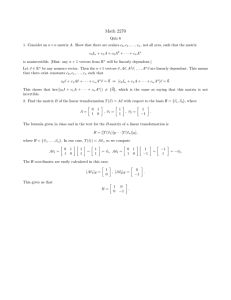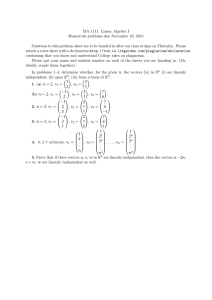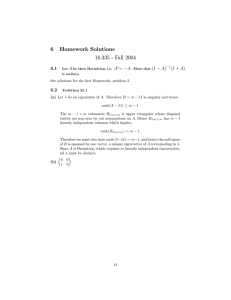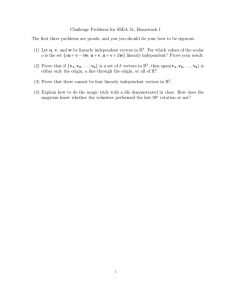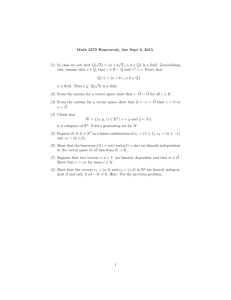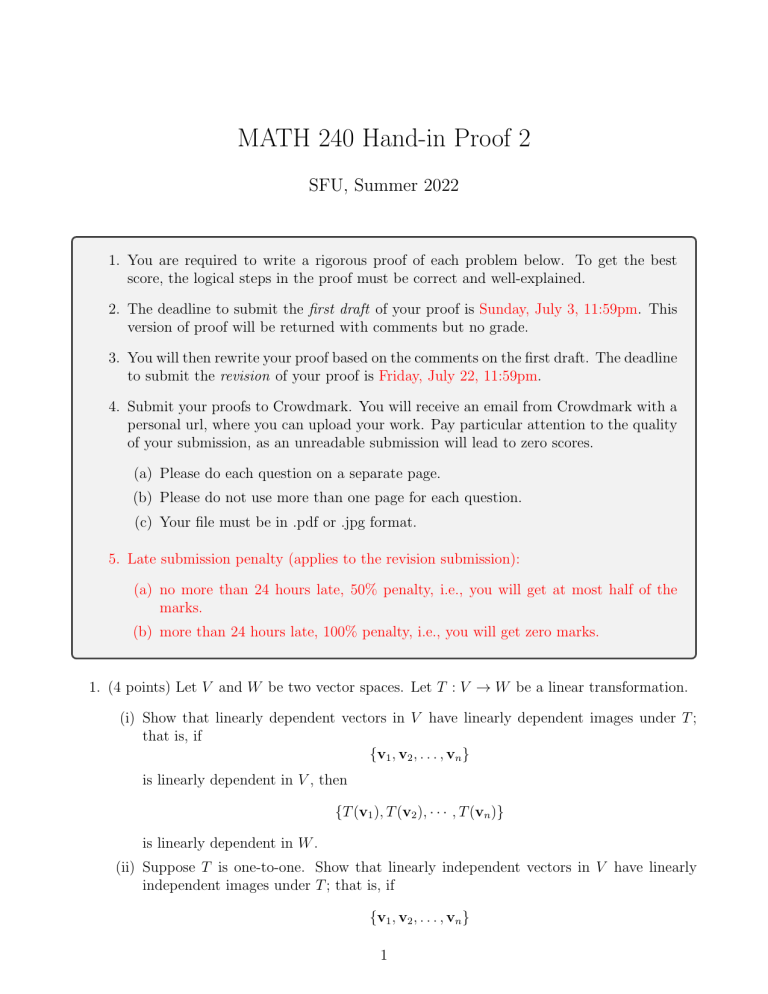
MATH 240 Hand-in Proof 2
SFU, Summer 2022
1. You are required to write a rigorous proof of each problem below. To get the best
score, the logical steps in the proof must be correct and well-explained.
2. The deadline to submit the first draft of your proof is Sunday, July 3, 11:59pm. This
version of proof will be returned with comments but no grade.
3. You will then rewrite your proof based on the comments on the first draft. The deadline
to submit the revision of your proof is Friday, July 22, 11:59pm.
4. Submit your proofs to Crowdmark. You will receive an email from Crowdmark with a
personal url, where you can upload your work. Pay particular attention to the quality
of your submission, as an unreadable submission will lead to zero scores.
(a) Please do each question on a separate page.
(b) Please do not use more than one page for each question.
(c) Your file must be in .pdf or .jpg format.
5. Late submission penalty (applies to the revision submission):
(a) no more than 24 hours late, 50% penalty, i.e., you will get at most half of the
marks.
(b) more than 24 hours late, 100% penalty, i.e., you will get zero marks.
1. (4 points) Let V and W be two vector spaces. Let T : V → W be a linear transformation.
(i) Show that linearly dependent vectors in V have linearly dependent images under T ;
that is, if
{v1 , v2 , . . . , vn }
is linearly dependent in V , then
{T (v1 ), T (v2 ), · · · , T (vn )}
is linearly dependent in W .
(ii) Suppose T is one-to-one. Show that linearly independent vectors in V have linearly
independent images under T ; that is, if
{v1 , v2 , . . . , vn }
1
is linearly independent in V , then
{T (v1 ), T (v2 ), · · · , T (vn )}
is linearly independent in W .
2. (4 points) Let A be an m × n matrix, and B an n × p matrix.
(i) Show that Nul(B) ⊆ Nul(AB).
(ii) Explain why we can expand a basis for Nul(B) to a basis for Nul(AB).
(iii) Suppose we have expanded a basis
{b1 , b2 , . . . , br }
for Nul(B) to a basis
{b1 , b2 , . . . , br , c1 , c2 , . . . , cs }
for Nul(AB). Show that
{Bc1 , Bc2 , . . . , Bcs }
is linearly independent.
(iv) Use the above results and The Rank Theorem to prove that
rank A + rank B ≤ rank AB + n
2
